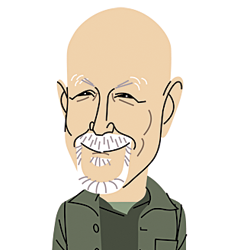 Lightweight exhibits certainly reduce the high cost of drayage. But do they offer the environmental benefits we think they do? Let's take a look.
Lightweight exhibits certainly reduce the high cost of drayage. But do they offer the environmental benefits we think they do? Let's take a look.
The shipping industry, Rocky Mountain Institute, Northeast States Center for a Clean Air Future (NESCCAF), federal agencies, and the National Research Council (NRC) have looked at this question carefully, and their conclusions might surprise you.
How big is big?
The biggest trucks on the road are allowed to weigh 80,000 pounds – that's the total for tractor, trailer, and cargo. According to NESCCAF, if you could drop 15,000 pounds,you would boost fuel economy from 5.4 to 5.9 miles per gallon.
This would save about 40 gallons of fuel and about 900 pounds of carbon dioxide on a trip from New York to Las Vegas.
Unless you are building with marble and steel, it's virtually impossible to reduce your exhibit's weight by 7.5 tons! In fact, most trucks fill up without ever reaching the 80,000 pound weight limit. The typical exhibit shipment is closer to the national average of about 55,000 pounds. The truck itself accounts for more than half of this total, leaving exhibitors just 20,000 to 25,000 pounds to work with.
NESCCAF and the NRC conclude that you can improve fuel economy by one-half of one percent for every 1,000 pounds of weight savings. You would have to shed two tons of exhibit weight to gain just one-tenth of a mile per gallon. NESCCAF put it this way: "This result suggests that efforts to reduce [weight] will have only a modest benefit on fuel economy, at least on a long haul route."
Things change a bit if you ship across town with lots of stops and starts, or up steep grades to cities like Denver. In these unusual situations, saving 1,000 pounds will improve fuel economy by 1.5 to 2 percent. In this case, shaving two tons would boost mileage from 5.4 to 5.9 miles per gallon, but only for a short distance.
These are still small numbers. They tell us that it pays to shed your heaviest items, such as steel double decks. But splitting hairs over a pound here and there makes little difference in the real world.
Is there a smarter way?
The good news is that we still have two big fish to fry. Here's one of them: It takes about 180 horsepower to move a heavy truck down the highway. One hundred of those horses are pushing air out of the way and the other eighty are making the tires roll. Improving tires and aerodynamics boosts fuel economy by 14 percent, and you can hire these options today.
Just look for the EPA's SmartWay logo. SmartWay is a voluntary program for truckers who run efficient equipment and adopt EPA's no-idling policy. When you hire a SmartWay van line, you've hired a Greener shipper.
Ahead by miles
The second option stems from the fact that, as heavy as they are, trucks rarely reach their full weight capacity. Herein lies another Green opportunity: make the most of every mile by packing more exhibits onboard.
Let's face it: we ship a lot of air with our exhibits. Wall panels, reception counters, and product displays are hollow. Much of what goes into crates is empty space too. Even so, we're burning a gallon of diesel to push this empty space five or six miles down the road.
If we could wring out the dead space and squeeze more exhibits onto each truck, we'd reduce the number of trucks on the road. Consolidating shipments is economical for shippers to, so it's a win-win situation. According to the research, packing more goods onto each truck beats shaving weight by miles.
So look for better ways to pack your exhibits. For example, skidding is more space efficient than crating, and the drayage rates are identical. And if your weight-saving strategy involves replacing hard construction with tension fabric, your shipments will be lighter and more compact at the same time.
From numbers come opportunities
Going Green often means applying real metrics to the choices we make. Saving weight sounds like a great idea, and there are good financial reasons to do so. But it's easy to get carried away and miss out on Greener options.
If your exhibits are unusually heavy, by all means put them on a diet. If they are more or less average, remember that good things come in small packages. Look for ways to consolidate shipments.
And don't forget the easiest choice of all: the SmartWay logo identifies truckers who share your commitment to going Green.




 We're considering buying lightweight exhibits to make them more sustainable. Is this a Greener way to go?
We're considering buying lightweight exhibits to make them more sustainable. Is this a Greener way to go? Lightweight exhibits certainly reduce the high cost of drayage. But do they offer the environmental benefits we think they do? Let's take a look.
Lightweight exhibits certainly reduce the high cost of drayage. But do they offer the environmental benefits we think they do? Let's take a look. 


